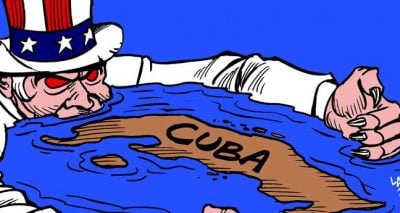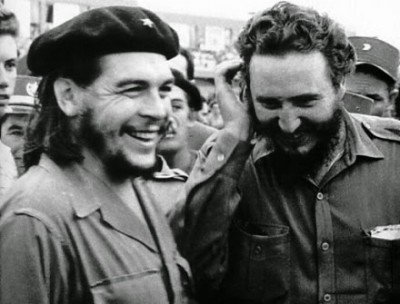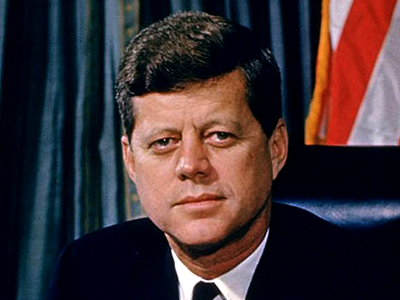The US War on Cuba: From Economic Embargoes, Biological Warfare to US-Backed Terrorism

All Global Research articles can be read in 51 languages by activating the “Translate Website” drop down menu on the top banner of our home page (Desktop version).
Visit and follow us on Instagram at @crg_globalresearch.
***
.
Before the rise of Cuba’s Communist party, there was a US-backed fascist government under the leadership of Fulgencio Batista who ruled Cuba with an iron fist. Batista was elected in 1940 serving a 4-year term. Then Batista’s reign of terror effectively began when he decided to run for re-election in 1952, but when his political party found itself practically in last place during the election with Roberto Agramonte of the Orthodox Party who was in the lead followed by Carlos Hevia of the Authentic Party, he decided to lead a military coup and cancel the elections. The current president at the time, President Carlos Prio Socarras went into exile as a result. So what did Washington do? They immediately recognized Batista’s government and gave him financial and military support among other benefits.
In the meantime, Batista suspended the 1940 Constitution that he originally supported and then made a radical move by cancelling whatever civil liberties the Cuban people had left. Batista had total control over the Cuban economy that was once on equal grounds with Italy in terms of economic growth. One of Batista’s first moves as a typical dictator in Latin America when he gave his full-support to wealthy landowners who owned basically almost all of the sugar plantations on the island.
Image on the right: Fulgencio Batista (Public Domain)

Under Batista, the divide between rich and poor grew although wages rose to keep the Cuban people somewhat temporarily satisfied at least for the time-being. However, government corruption was out of control while the American mafia (both Italian and Jewish) were in control of drugs, gambling and prostitution allowing these criminal enterprises to become profitable industries in Cuba.
Cuba’s situation became so dire that the people began to get angry. So Batista made the decision to take over the media by way of censorship and he even created an anti-communist secret police force that was authorized to use torture and was even given permission to conduct public executions to install fear among the Cuban people.
It is estimated that there were between 10,000 to 20,000 Cubans who were actually murdered with Washington’s full-knowledge of the situation, but hey, to the US establishment that was American-style democracy in action.
Then the birth of The July 26 Movement led by Fidel Castro took place against the US-backed dictatorship with an attack on the Moncada army barracks in Santiago, but was defeated by Batista’s military. As university students and anti-Batista activists continued protests against Batista’s social policies, the secret police forces increased repressive tactics to crush the protests.
 It was just a matter of time before the people rose up against the Batista’s tyrannical regime as his actions paved the way for the Cuban revolution of 1959 and that was the consequences of the US government interfering in the politics and economy of a foreign country. It was inevitable.
It was just a matter of time before the people rose up against the Batista’s tyrannical regime as his actions paved the way for the Cuban revolution of 1959 and that was the consequences of the US government interfering in the politics and economy of a foreign country. It was inevitable.
However, relations between the new Castro government and Dwight D. Eisenhower administration were at first a bit friendly, but when Cuba’s new Agricultural Reform law confiscated lands that were owned and operated by US businesses while sponsoring anti-US revolutionary movements in the Caribbean, the relationship quickly turned sour. An arms embargo was imposed on Cuba on March 14, 1958 which was towards the end of an armed struggle between the fascists led by Fulgencio Batista and the rebels led by Fidel Castro which was the start of a series of embargos that eventual led to today’s protests erupting in Cuba.
The US government has been trying to overthrow Cuba’s communist system since Fidel Castro seized power in 1959, so the Eisenhower administration made a move against Cuba a year later.
So in the summer of 1960, the US started an economic war so they imported less brown sugar from Cuba under the Sugar Act of 1948 allowing Cuba to rely on the Soviet Union who agreed to purchase the sugar.
During that same time period, the US refused to export oil to Cuba making it reliant on crude oil from the Soviet Union, it was a move that prompted US companies to refuse refining Cuba’s oil. Cuba responded to the actions imposed by the US by nationalizing three US-owned refineries that became the Union Cuba-Petroleo. The Eisenhower administration imposed Cuba’s first trade embargo that restricted selling Cuba various products with the exception of food and medicine.
 Then in the month of October, tensions rose between Washington and Havana when Castro decided to nationalize all US businesses without compensation. US diplomats were also expelled from Cuba that prompted Eisenhower to cut all diplomatic channels with Cuba on January 1961 allowing the US trade embargo to continue under the Trading with the Enemy Act 1917. Then in April of 1961, President John F. Kennedy gave the green light for the CIA-backed Bay of Pigs Invasion which failed when Cuban forces quickly defeated a covert plan involving Cuban exiles that began under the Eisenhower administration. What was the consequence of those actions by the US government? It led the Cuban government to declare itself socialist aligning itself with the USSR.
Then in the month of October, tensions rose between Washington and Havana when Castro decided to nationalize all US businesses without compensation. US diplomats were also expelled from Cuba that prompted Eisenhower to cut all diplomatic channels with Cuba on January 1961 allowing the US trade embargo to continue under the Trading with the Enemy Act 1917. Then in April of 1961, President John F. Kennedy gave the green light for the CIA-backed Bay of Pigs Invasion which failed when Cuban forces quickly defeated a covert plan involving Cuban exiles that began under the Eisenhower administration. What was the consequence of those actions by the US government? It led the Cuban government to declare itself socialist aligning itself with the USSR.
The US Congress then passed the Foreign Assistance Act on September 4, 1961 that was part of the Cold War Act that strictly prohibited any form of aid to Cuba and allowed the US President to impose a trade embargo against Cuba. Then on January 21, 1962 fourteen members of the Organization of American States (OAS) voted against Cuba while six member states abstained. Sanctions were followed-up by the OAS on July 26, 1964 but a decade later the sanctions were “rescinded.” Over the years, OAS and Cuban relations eased on the tensions that was inspired by Washington and the suspension of membership for Cuba was finally lifted on June 2009.
Kennedy went as far as to extend extreme measures by executive order by imposing trade restrictions that expanded the embargo to include all imports of Cuban-made products even if the products were made or assembled outside of Cuba. The newly amended Foreign Assistance Act of August 1962 strictly prohibited any country to provide Cuba with humanitarian assistance.
On September 7, 1962 the Cuban embargo was tightened so that all trade with Cuba was restricted except food and medicine. In October 1962, after the scare of the Cuban missile crisis, travel was restricted between the US and Cuba with the Cuban Assets Control Regulations under the Trading with the Enemy Act as a response to the Cuban government hosting Soviet nuclear weapons as Cuban assets in the U.S. were frozen. Since then, Cuba has been struggling to get basic products and other desperately needed necessities.
An article from October 2020 in the Business Standard ‘US trade embargo causes $144 billion losses for Cuban economy’:
The US trade embargo against Cuba has caused more than $144 billion in losses for the island nation’s economy in the past six decades, Foreign Affairs Minister Bruno Rodriguez said.
The burden of mounting financial, economic and trade sanctions, “for a small economy like Cuba’s, is an overwhelming burden” Xinhua news agency quoted Rodriguez as saying at a press conference while presenting the government’s latest tally of the losses
Former US President Donald Trump imposed his “maximum pressure” strategy against Cuba by slapping on more than 240 plus new sanctions and to make matters worse, he added Cuba to the list of “state sponsors of terrorism” again to keep his voter base in the Cuban-American community intact. Trump also imposed a travel ban for American tourists which hurt Cuba’s tourism industry. Trump also banned Cuba from buying important medicines and imposed sanctions on oil imports to Cuba from Venezuela.
As much as I did not like Barack Obama, he did loosen some restrictions on US citizens who wanted to visit Cuba. Obama also removed Cuba from the list of “state sponsors of terrorism” although it was the US government who committed acts of terrorism against Cuba. In fact, anti-Castro terrorist groups such as Alpha-66 was responsible for several hotel bombings in Cuba in the mid-90’s that even killed an Italian tourist and injuring many others.
There were and still are other Anti-Castro terrorist groups operating mostly in South Florida such as Brothers to the Rescue (BTTR), Cuban American National Foundation(CANF) and several others involved in assassination attempts against Fidel Castro and advocated for regime change of the Cuban government.
If you remember one famous terrorist who lived in Miami by the name of Luis Posada Carriles (who actually died a free man in 2018) was apprehended in 2005 as reported by SFGATE.com (formally the San Francisco Chronicle) ‘Arrest of Cuban ex-CIA figure puts Bush in tough political spot’ said that “Cuban exile Luis Posada Carriles, a former CIA operative who is wanted in Venezuela for the 1976 bombing of a Cuban airliner that killed 73 people, was seized by U.S. authorities in Miami on Tuesday.” The report laid out the facts on Posada’s crimes against Cuba:
A strident anti-communist, Posada long has been regarded as a terrorist by Cuba, Venezuela and other nations. But he is a hero to many in Florida’s politically powerful anti-Castro Cuban community, who tend to support Republicans. “He is a fighter, a true believer who has fought for the freedom of his country,” said Jose Hernandez, president of the Cuban American National Foundation in Miami, responding to news of Posada’s arrest.
Posada is accused of masterminding the bombing of a Cubana jetliner over Barbados that killed many members of Cuba’s Pan American Games team on Oct. 6, 1976. Venezuelan authorities arrested Posada after tracing the bomb to two Venezuelans who had worked for Posada’s private security agency in Venezuela
In an interview conducted by the Miami Herald “Posada denied any role in the bombing.” Peter Kornbluh, the director of the Cuba Documentation Project at the National Security Archive at the time claimed that declassified documents from the CIA and FBI link Posada to prior meetings and had planned to place a bomb on the Cubana jetliner, “Posada was involved in an unprecedented crime at the time for the Western Hemisphere,” Kornbluh continued, “President Bush should implement the principles of the war against terror that he espouses — that no nation should harbor terrorists.” The article clearly explained what Posada was involved in:
Posada has had a long history of planning assassinations and planting bombs in Cuban government offices since the early 1960s, when he was trained in demolition and guerrilla warfare by the CIA. The declassified information said the CIA paid him $300 a month in the 1960s and that he worked for the CIA at least from 1965 until June 1976. Over the years, FBI reports associated him with plans to blow up Soviet and Cuban freighters in Mexico, a plot to overthrow the Guatemalan government, and involvement in anti-Castro activities in the Dominican Republic and Puerto Rico. In the 1980s, he worked with the CIA in El Salvador to ferry weapons to the U.S.-backed Contra Army in its fight against Nicaragua’s Sandinista government.
In 1997, Posada allegedly orchestrated a dozen bombings in Cuba intended to deter the growing tourism trade. An Italian businessman was killed and 11 people wounded as a result. In a taped interview with the New York Times, he said: “It is sad that someone is dead, but we can’t stop”
After Posada was found not guilty and was acquitted in 2011 on charges of lying to immigration officials on how he entered the US and his involvement of terrorism against Cuba in 1997. Cuba called the verdict a “farce” while Venezuela accused the US of harboring a well-known terrorist.
One other episode of US imperialism’s thirst for war against Cuba occurred in 1962 called ‘Operation Northwoods’ which was a false-flag operation proposed by the US Department of Defense (DOD) and the Joint Chiefs of Staff that called for the CIA and other clandestine organizations within the US government to carry-out acts of terrorism against the military and civilian targets on US soil to justify a war against Cuba.
The idea was to blame Cuba for the terrorist attacks that also included hijacking planes so that they will be shot down or blowing up a US ship or even orchestrating random terrorist attacks within U.S. cities. They also detailed the possibility of assassinating or sinking boats filled with Cuban refugees, but the plan was flatly rejected by President John F. Kennedy. In 1981, Washington’s endless war on Cuba led to biological warfare with help from the CIA and the US military who had launched an operation by unleashing ‘Dengue Fever’ which is also known as ‘Hemorrhagic fever’ on Cuba effecting more than 273,000 people killing 158 including men, women and children.
On September 6, 1981, The New York Times reported what Fidel Castro had said regarding the US government’s role in biological warfare against Cuba:
”we urge the United States Government to define its policy in this field, to say whether the C.I.A. will or will not be authorized again- or has already been authorized – to organize attacks against leaders of the revolution and to use plagues against our plants, our animals and our people.”
US President Ronald Reagan and his State Department’s response was the following, “Mr. Castro’s charges of possible United States involvement in the epidemic were ”totally without foundation.” The State department blamed Castro’s revolution as the cause of the outbreak
“The Cuban Government has always tried to blame the United States for its failures and its internal problems” continued ”The Cuban revolution is a failure, and it is obviously easier to blame external forces like the United States than to admit those failures.”
Then an all-out assault on the Cuban economy took place years later as the US congress passed the Helms–Burton Act or The Cuban Liberty and Democratic Solidarity (Libertad) Act of 1996 that strengthened the embargo against Cuba. The law meant to expand the embargo’s jurisdiction where it can apply its “territorial application” that basically penalized foreign companies who do any sort of business with Cuba. US president Bill Clinton finalized the Helms-Burton Act by signing it into law on March 12th, 1996. The passage of the Helms-Burton Act was a response to an incident that occurred on February 24, 1996 when Cuba’s territorial claims had been compromised. Cuba dispatched two fighter jets who shot down two private planes operated by ‘Brothers to the Rescue’ which they describe as a “Miami-based humanitarian international Search and Rescue support group” (codename for terrorists!) which was supposedly on a search mission on international waters.
One important fact on the effects of the US embargo was that it did allow Cuba to resist any US interference in its domestic affairs as the support of the Cuban people grew stronger over time. In other words, if the US would have kept its hands out of Cuba, who knows what kind of government it would have developed without foreign interference, but the world will never know what Cuba could have turned into on its own. Washington’s political establishment, the Military-Industrial Complex, multi-national bankers and corporations and the mainstream media along with Cuban-American community in Miami, New Jersey and elsewhere are continuing to criticize Cuba, some are even calling for a US intervention. Whatever actions Biden takes against Cuba, it will be along the lines of whatever past administrations have done and that is to tighten the screws on Cuba until the people scream uncle, for Uncle Sam that is.
*
Note to readers: Please click the share buttons above or below. Follow us on Instagram, @crg_globalresearch. Forward this article to your email lists. Crosspost on your blog site, internet forums. etc.
This article was originally published on the author’s blog site, Silent Crow News.
Timothy Alexander Guzman is a frequent contributor to Global Research.
Featured image is from SCN

